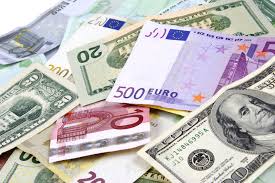
The U.S. dollar kept its pace steady against major currencies as the Federal Reserve officials held on to their beliefs of a sooner-than-expected rate hike this year. St. Louis Fed President James Bullard added to the hawkish comments, stating that the rates hikes are not as far as perceived due to a remarkable improvement in the labor market. He noted that inflation expectations are rising at a stable pace.
Click Here For More Market Exclusive Updates & Analysis
Fed’s comments weigh on euro and sterling
The dollar surged against both the euro and the pound sterling. However, the trading volume is expected to be thin as most of the markets across the world are closed on account of Good Friday. EUR/USD slipped 0.11% to 1.1164 while GBP/USD lost 0.26% to 1.4119 during today’s trading session.
The attacks on Brussels this week had led the bearish sentiment in both the euro and sterling. At the same time, the optimism around potential rate hikes in the U.S. is also weighing on the euro. On the other hand, the nearing June referendum over Brexit has kept the traders in the pound cautious.
Japan’s consumer inflation disappointing
Meanwhile, the Yen lost its appeal against the greenback today after Japan’s consumer inflation came in flat in February. The lower energy costs and weak consumption in the region kept deflationary pressure strong, according to data published on Friday. The consumer price inflation reading stood at 1.1% in February, unchanged from what it was in January.
Koya Miyamae, a senior economist at SMBC Nikko Securities, commented that the current pace of inflation indicates that the Bank of Japan will not reach its target inflation in the next few years. Moreover, such data could now force the BOJ to implement additional stimulus pressures, though, it had its monetary policy meeting two months back.
USD/JPY inched up by 0.14% to 113.05 during the day. The U.S. Dollar Index soared 0.11% to $96.17 during the late Asian trade.




